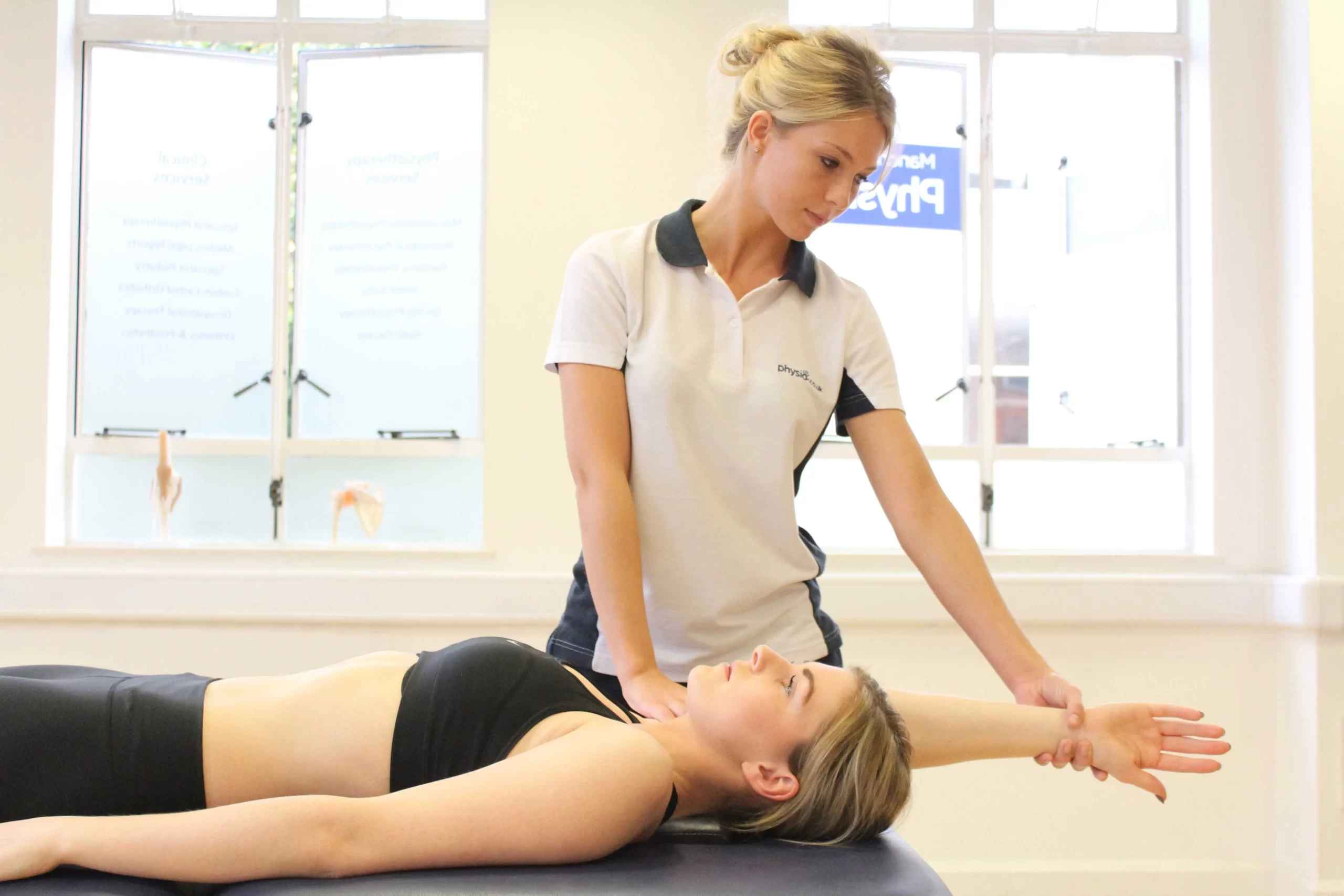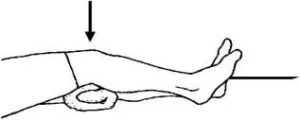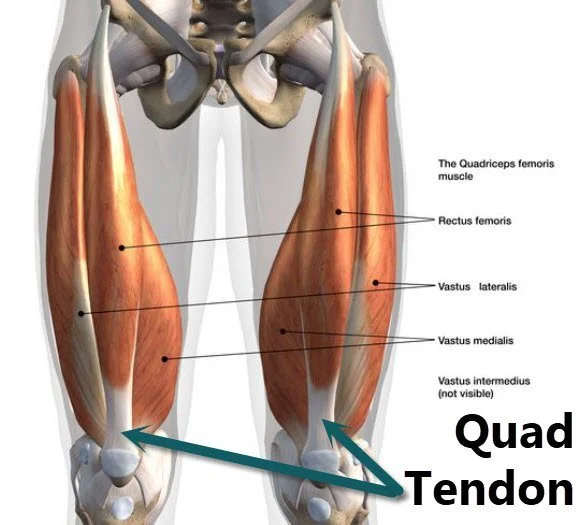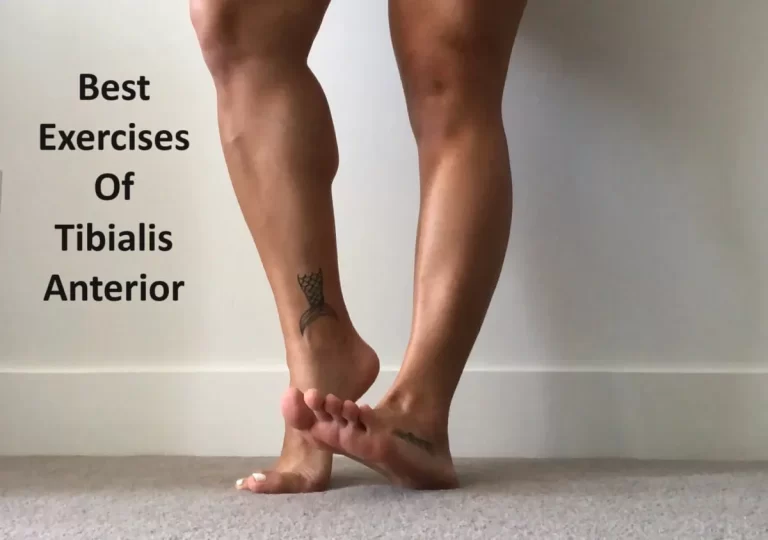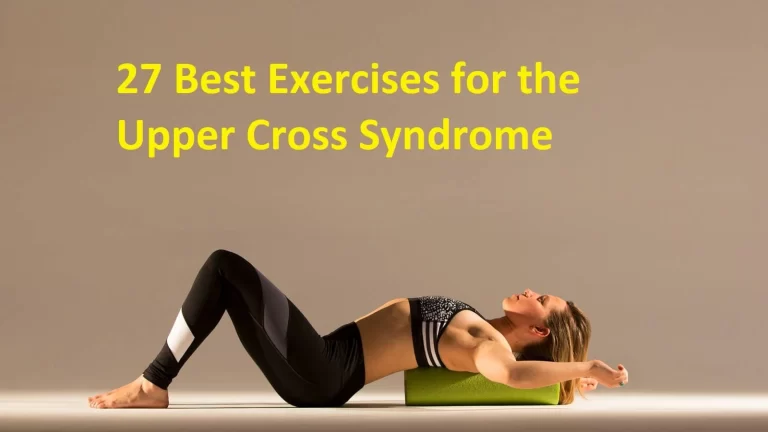16 Best Exercise for Bicipital Tendonitis
Introduction:
Exercise for Bicipital Tendonitis is an essential component of your treatment plan. Bicipital tendonitis can be treated with certain exercises. Exercise can help maintain shoulder strength while the problem heals. Regular exercise helps speed up recovery and promote healing.
Your wounded tendon will regain strength with exercise. Programs for exercise help you become more coordinated and self-assured in your regular activities. Exercises in physical therapy can help you regain your range of motion, lessen your pain, and resume your regular activities. In addition to improving general strength and flexibility, this exercise can help with symptom relief.
What is a Bicipital Tendonitis?
Bicipital tendinitis, commonly known as biceps tendonitis, is a disorder that causes irritation or inflammatory reaction in the biceps tendon. The biceps tendon connects the biceps muscle to the shoulder and elbow joints, providing arm mobility and stability. Bicipital tendonitis is frequently caused by overuse, repetitive motions, or a sudden injury and is common in athletes, weightlifters, and those who perform repetitive arm movements.
Aging can also contribute to biceps tendonitis. Due to recurrent minor injuries to the area, the ligament that runs over the long head of the biceps tendon may grow with age. This ligament swelling may result in incorrect tendon friction, irritating and inflaming the tendon.
The advantages:
Here are the benefits of regular exercise.
- Strengthens muscles
- Increase the effectiveness of the everyday tasks you perform.
- Lessen the inflammatory reaction
- Relaxing muscles
- Release the stress and tightness
- Improving coordination
- Increased range of motion
Exercise for Bicipital Tendonitis:
When a person develops biceps tendonitis, it is typically a chronic injury caused by inflammation of the protective covering of the tendon from prolonged use. As a result, the most important therapy for biceps tendonitis is to rest and allow the tendon covering to heal. But you can continue strengthening your muscles and maintaining flexibility in your bicep and shoulder by working out while your injury heals.
The following are the greatest exercises that can help you with bicipital tendonitis.
Active Resisted Elbow Flexion
- Take a standing stance on the ground to begin.
- Wrapped around your feet is a theraband.
- Take hold of the resistive theraband’s end handle with your hand.
- Remain in a relaxed stance and flex your elbow.
- Hold this position for a few seconds.
- Next, slowly lower your elbow.
- Then return to your neutral position.
- Then relax.
- Repeat this exercise five to ten times.
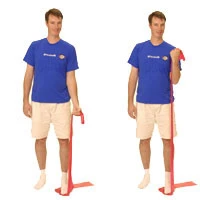
Shoulder Horizontal Abduction
- Begin in a comfortable prone position on the table or in bed.
- That injured arm that is now swinging off a bed or table.
- A lightweight dumbbell can be used.
- The straight arm should then be raised straight out to your side.
- Press your shoulder blade while raising your horizontal arm.
- Hold this position for a few seconds.
- Then lower your arm.
- Then return to your neutral position.
- Then relax.
- Repeat this exercise five to ten times.
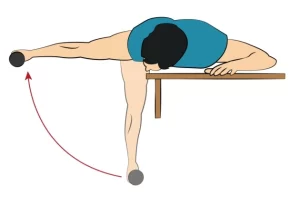
Isometric elbow flexion
- To begin, select a spot to sit comfortably.
- Place your forearm on the surface.
- Put your palm up and face upward.
- While resisting with your upper hand, attempt to bend your arm at the elbow.
- Keep your elbow from moving.
- Hold this position for a few seconds.
- Then return to your neutral position.
- Then relax.
- Repeat this exercise five to ten times.
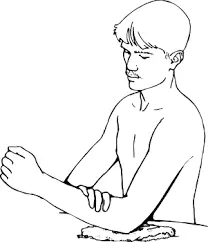
Standing Row
- Maintain a hip-width distance between your feet, a straight hip, a tall back, and slightly bent knees.
- Place the cable pulley at about chest height, holding one handle in each hand with the thumbs pointed towards the ceiling and the handles facing each other.
- Raise your chest and bring the rope back while keeping your elbows close to your sides and your arms horizontal to the ground.
- Hold this position for a few seconds.
- Then return to your neutral position.
- Then relax.
- Repeat this exercise five to ten times.
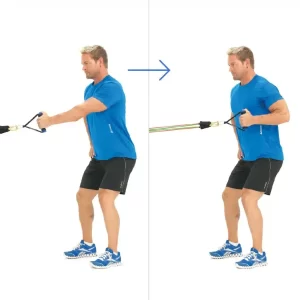
Forearm Supination and Pronation
- Start by taking your place in the chair or at the table.
- Arms by your sides, please.
- You can use a lightweight dumbbell as resistance
- With your palms facing up, turn over your hands.
- Hold this position for a few seconds.
- With your palm facing down, extend your arm now.
- Hold this position for a few seconds.
- Then return to your neutral position.
- Then relax.
- Repeat this exercise five to ten times.
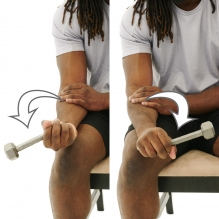
Resisted external rotation
- Begin by standing in a relaxed manner.
- Grip your wrists with a tiny resistance band.
- Maintain a ninety-degree angle with your elbows.
- Extend your wrists into the band.
- Hold this position for a few seconds.
- Then return to your neutral position.
- Then relax.
- Repeat this exercise five to ten times.
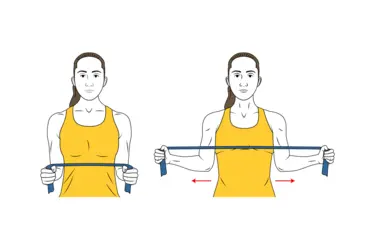
Sleeper stretch
- Take a comfortable side-lying position, bending your arm and placing your affected shoulder beneath you.
- After that, lower your forearm to the ground with the help of your other hand.
- Press down as far as it feels comfortable, or until the back of your shoulder stretches slightly.
- Hold this position for a few seconds.
- Then return to your neutral position.
- Then relax.
- Repeat this exercise five to ten times.
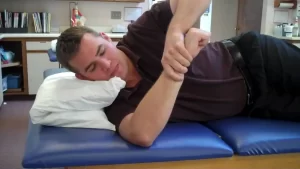
Biceps curls
- Begin in a comfortable standing stance.
- Now take hold of a lightweight object, such as dumbbells.
- Keep your palms pointing forward in your arms.
- Then maintain a straight upper arm.
- Lift the weight at your elbow after that.
- Hold this position for a few seconds.
- Lower your arm back down slowly.
- Then return to your neutral position.
- Then relax.
- Repeat this exercise five to ten times.
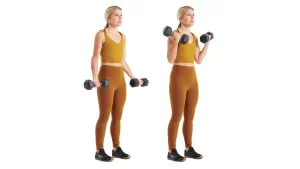
Side-lying external rotation
- Lay on your left side with a cushion beneath your head.
- Put a little towel beneath your right elbow, rolled up.
- With your right hand, grasp a hand weight.
- You might ask your physical therapist about the right-hand weight size.
- Make a straight angle with your arm in front of you.
- Your forearm should rest on your stomach.
- Lift the hand weight slowly in front of you while resting your elbow on the towel.
- When the weight reaches just over your elbow, stop.
- Hold this position for a few seconds.
- Return the weight to its lower position.
- Then return to your neutral position.
- Then relax.
- Repeat this exercise five to ten times.
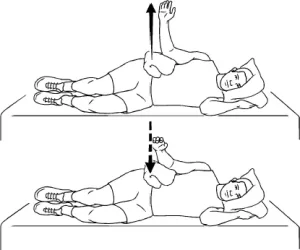
Biceps stretch
- First, take a comfortable position facing a wall and place yourself about a few inches away.
- With your hand now palm down, elevate your arm from your wounded side and attempt to touch the wall with your thumb side.
- Try to maintain a straight arm.
- Once your arm is raised, move your body in the opposite direction until your muscles begin to stretch.
- Hold this position for a few seconds.
- Then return to your neutral position.
- Then relax.
- Repeat this exercise five to ten times.
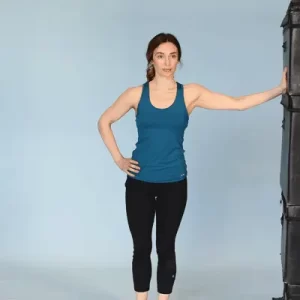
Elbow flexion
- Take a seat on the ground in a comfortable position first.
- Your elbow should now be comfortably bent as you raise your forearm.
- Holding a lightweight dumbbell can help you strengthen.
- Hold this position for a few seconds.
- Next, bring your forearms down.
- Then return to your neutral position.
- Then relax.
- Repeat this exercise five to ten times.

Resisted internal rotation
- Beginning by standing in a relaxed manner.
- Now face the object you attached the band to, like a door or anything else.
- Then take hold of the resistance band with your arm.
- Hold your elbows at a ninety-degree angle.
- Move the forearm toward the body after that.
- Hold this position for a few seconds.
- Then return to your neutral position.
- Then relax.
- Repeat this exercise five to ten times.
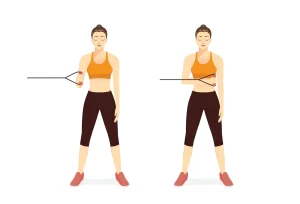
Single Shoulder Flexion
- With your arms by your sides, start from a standing position.
- Raise the injured arm forward and upward until it points toward the ceiling while maintaining its straight posture.
- Hold this position for a few seconds.
- Lower your arm.
- Then return to your neutral position.
- Then relax.
- Repeat this exercise five to ten times.
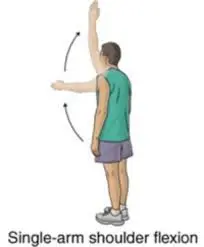
Shoulder Circle Crossover
- Firstly, you should stand with your arms by your sides.
- Extend your arms to the sides, palms facing front.
- With your arms extended behind you, bring your shoulder blades together.
- Stretch your arms out, hands facing forward.
- Bring your hands together.
- Now cross your arms in front of your body so that they are crossed horizontally.
- Next, turn the movements around so that your palms are facing away from you and behind you.
- Then return to your neutral position.
- Then relax.
- Repeat this exercise five to ten times.
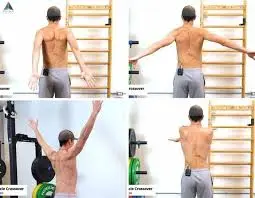
Band seated row
- Settle in and take a seat at the table to begin.
- Maintain a fully stretched posture.
- Hold your back straight.
- Encircle the soles of the feet with the resistance band.
- Take one end in each hand after that.
- Squeeze your shoulder blades.
- At this moment, pull the band toward the center of your body.
- Hold this position for a few seconds.
- Then return to your neutral position.
- Then relax.
- Repeat this exercise five to ten times.
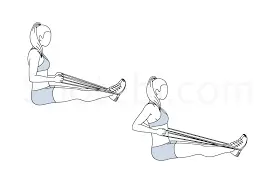
Wand Flexion
- Beginning on the floor, take a standing stance.
- Hold the object in both hands, such as a wand stick, or any other lightweight, stiff object.
- Then lift the wand until it is comfortable.
- Hold this position for a few seconds.
- Slowly down your arm.
- Then return to your neutral position.
- Then relax.
- Repeat this exercise five to ten times.
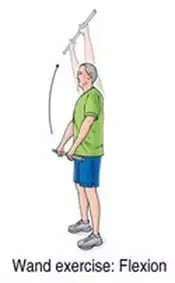
What safety measures are necessary when exercising?
- In between exercise sessions, relax.
- Make gentle bends and stretches.
- If you have more pain, stop right away.
- Keep your posture straight when you work out.
- For an optimal workout experience, choose loose, casual clothes that allow for maximum range of motion and relaxation. Don’t dress in fashionable or tight clothing.
- When exercising, try to avoid making any forceful or jerky movements.
- Avoid difficult activities.
- Every exercise should be completed in the correct sequence per the protocol, with the recommended number of repetitions for each exercise and stretches before and between sets.
- Stretching the tight muscles in your joint could be difficult, but it’s necessary and normal. Stretching and exercise shouldn’t hurt or generate stabbing feelings because this is bad for you and makes your condition worse.
When do you stop doing the exercises?
- Severe burning in the muscles.
- Joint soreness or swelling.
- You feel ill.
- If any numbness or pain is present.
- High fever
- Headache
- If engaging in exercise causes pain, stop.
Summary:
The inflammation of the tendon and soft tissues running along your bicep is known as biceps tendonitis. This may result in pain, swelling, and redness on the arm and shoulder’s outside. Heavy lifting and sports-related injuries are common causes. Many exercises may help minimize pain as the injury heals and alleviates the symptoms of tendonitis in the biceps.
Reducing as much as possible the amount of activities that produced the injury and resting the affected area are the best courses of action. In addition, icing works well. Reducing pain and inflammation can be achieved by using cold packs for 10 to 15 minutes every few hours.
FAQ:
How frequently should an individual who has bicipital tendinitis exercise?
Every day, the rotator cuff and stability exercises require at least thirty minutes to do. A modest daily exercise routine will benefit you.
How may bicep tendonitis be healed the quickest?
Cold packets
NSAIDs, or nonsteroidal anti-inflammatory medications.
Rest.
Physical therapy.
Injections of steroids.
When I have bicep tendonitis, which workouts should I avoid?
Exercises that put your biceps in a stretched position or that stretch your pecs should be avoided since they cause your shoulders to extend backward. A biceps tendon injury should not be strained when you are first healing from it.
Will tendinitis in the biceps go away?
There’s no need to put up with biceps pain. 75 percent of cases of tendonitis can be resolved with non-surgical methods such as physical therapy. There are two key tendons that your biceps muscle (the big, thick muscle that runs along the front of your arm) needs to flex and lift objects higher and farther.
When you have bicep tendonitis, what is the ideal way to rest?
It’s recommended to use the above sleeping positions to fall asleep on your back or the side that isn’t affected by bicep tendonitis. As part of your bedtime routine, you can also include mild shoulder stretches, but be careful not to overextend yourself.
What makes tendinitis in the biceps worse?
It is also possible for the pain to start or worsen with repeated overhead arm action, pulling, or lifting.
Should I work out the tendinitis in my arm?
Your exercise regimen doesn’t have to end because of overuse injuries. The key is to modify your daily routine to avoid overstressing the region that is affected. If you don’t, you run the risk of developing a chronic problem that lasts for several months. In the most severe forms of tendinopathy, the tendon may rip or rupture.
Is it better to use ice or heat to treat bicep tendonitis?
Ice the region for fifteen to twenty minutes every four to six hours. Moreover, keep in mind to put a towel or piece of cloth between your skin and the ice pack. Heat treatment may be more effective in treating persistent tendon pain, sometimes referred to as tendinopathy or tendinosis. Heat promotes blood flow, which could speed up the tendon’s healing.
If bicep tendonitis is ignored, what would happen?
Even though constant pain and weakness might seem like something you can “push through,” keep in mind that biceps tendonitis can cause a partial or complete rupture of the tendon if it worsens and causes destruction and other serious tissue breakdown.
Does bicep tendonitis benefit from stretching?
You can start adding weight to your hand as soon as the workout starts to feel simpler. By keeping your biceps flexible, you can prevent tendinitis from getting worse.
Does tendinitis in the biceps recover on its own?
Thankfully, most cases of bicipital tendonitis can be resolved with simple home conservative measures, and surgery is not always required. The recommended course of treatment for muscle strains is relatively similar to that for tendon strains, which also need for conservative measures.
How come nighttime aggravating tendinitis in the biceps?
Many variables, including reduced blood flow to the affected area, gravity’s pull, and overuse during the day, may worsen pain at night for people with tendonitis.
References:
- Pt. B. S. (2024b, 15 July). Exercises for Bicep Tendonitis: Eight. Verywell Medical Center. This link: https://www.verywellhealth.com/biceps-tendonitis-rehab-4771764,
- On December 13, 2023b, Bariya, D. PT Clinic on the Go: The Top 17 Exercises for Bicipital Tendonitis. Mobile Clinic for Physiotherapy. What are the top 17 exercises for bicipital tendonitis? https://mobilephysiotherapyclinic.in/
- Contributing Editor for WebMD. 2023 March 10. The Greatest Biceps Tendonitis Exercises. Web Medical. www.webmd.com/a-to-z-guides/best-exercises-for-tendonitis-biceps
- 2020 May 30; Timmons, J. [Outdated] Easy Exercises to Reduce Tendonitis in the Biceps. Bicep tendonitis exercises from Healthline. https://www.healthline.com/health/fitness-exercise
- Image 1, Performance Health Academy, “Thera-Band Elbow Flexion (standing unilateral)” (n.d.). Thera-band elbow flexion while standing unilaterally is available at https://www.performancehealthacademy.com.
- Image 6, Exercise routines – Shoulder External Rotation with Band (n.d.). Shoulder-external-rotation-with-band exercise: https://www.workoutsprograms.com
- Image 14, On April 4, 2024, E. C. The Quickest Method for Rotator Cuff Rehabilitation. Careful Handling. the strained rotator cuff at https://www.precisionmovement.coach/
- Image 15, Daisy. (17 July 2021). Exercise Guide with Illustrations for Band Seated Row. Exercise guide: Band-seated row on SPOTEBI. https://www.spotebi.com/

